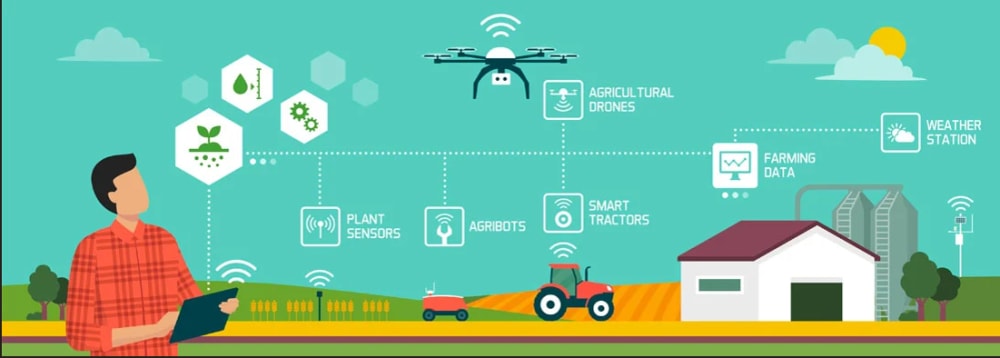INTRODUCTION:
The proposed AI-powered drone application for agriculture addresses key challenges in precision farming, crop monitoring, and resource management. Traditional methods rely on manual labor and periodic inspections, which can be inefficient, costly, and error-prone. The existing technological gap in agriculture hinders productivity while increasing resource consumption and environmental impact.
PROBLEM ADDRESSED:
Our approach addresses inefficiency and inaccuracy in crop monitoring and resource management. Farmers struggle to timely detect crop diseases, pests, and nutrient deficits. Additionally, adjusting irrigation and fertilization schedules is challenging without precise data, leading to suboptimal yields, increased costs, and environmental issues from excessive water and chemical use.
POTENTIAL BENEFITS:
Our AI-based drone application has various benefits:
Increased Crop Yield: By delivering real-time, precise data, farmers can make more educated decisions, resulting in improved crop management and higher yields.
Cost reduction: Automation eliminates the need for manual labor, lowering operational expenses.
Environmental sustainability: Proper application of water, fertilizer, and pesticides reduces waste and pollution.
Early Detection: Artificial intelligence systems can detect early indicators of illnesses and pests, allowing for earlier action and lowering crop losses.
Design Functionality:
The system uses high-resolution drones equipped with multispectral and thermal imaging sensors to capture detailed information on crop health, soil conditions, and environmental variables. AI algorithms process this data to generate useful insights.
Key features include:
Crop Health Monitoring: Multispectral imaging identifies changes in plant health, pinpointing regions with disease or nutritional deficits.
Pest detection: Thermal imaging and artificial intelligence algorithms identify pest infestations early.
Resource Management: AI-powered analysis optimizes irrigation and fertilization based on soil moisture and nutrient content. Predictive analytics uses historical data and machine learning to forecast issues and recommend preemptive measures.
Newness and Improvement: While prior technologies provide basic drone-based agricultural monitoring, our approach incorporates significant advancements
Advanced AI Integration: Uses cutting-edge machine learning methods to provide more accurate and predictive insights. Comprehensive imaging combines multispectral and thermal imaging to provide a comprehensive view of crop and soil health.
Real-time Analysis: Farmers receive rapid feedback via a user-friendly smartphone app.
Scalability: Designed to scale from small farms to major agricultural operations.
APPLICATION AND MARKET POTENTIAL:
This method has applications in a variety of agricultural fields, including crop farming, orchards, vineyards, and horticulture. The worldwide precision agriculture market is expected to reach USD 12.9 billion by 2027, driven by the growing use of smart farming technology. Our technology, with its sophisticated capabilities and practical benefits, is well-positioned to take a large portion of this market.
MANUFACTURING COSTS:
The device will utilize off-the-shelf drone hardware and custom AI software, minimizing development costs and accelerating time-to-market. Production costs are expected to be competitive, with additional value from advanced AI features. Ongoing developments in drone technology and economies of scale will lead to further cost reductions over time.
In summary, our AI-powered drone application for agriculture offers a transformative approach to modern farming, enhancing productivity, sustainability, and profitability for farmers worldwide.
Like this entry?
-
About the Entrant
- Name:Harshini Lk
- Type of entry:teamTeam members:
- HARSHINI LK
- NIKITHA VM
- MOGITHVARMA D
- Patent status:none

